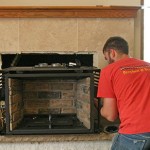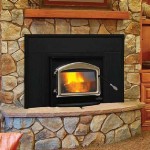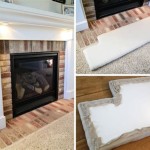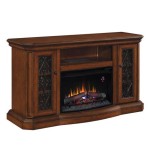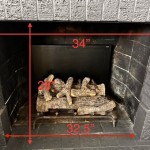```html
High Efficiency Fireplaces: A Comprehensive Overview
The pursuit of energy efficiency is a growing concern for homeowners, particularly when it comes to heating solutions. Fireplaces, often associated with warmth and ambiance, have traditionally been regarded as inefficient heating sources. However, advancements in technology have led to the development of high-efficiency fireplaces that offer both aesthetic appeal and improved energy performance. This article will explore the key aspects of high-efficiency fireplaces, examining their types, benefits, and factors to consider when selecting one.
A high-efficiency fireplace is generally defined as one that converts a greater percentage of the fuel's energy into usable heat for the living space, while minimizing heat loss through the chimney and other areas. These fireplaces incorporate design features and technologies specifically engineered to optimize combustion and heat distribution. The ultimate goal is to provide a comfortable level of warmth while reducing energy consumption and environmental impact.
Types of High Efficiency Fireplaces
Several types of fireplaces are designed with high efficiency in mind. Each type uses different fuel sources and technologies to achieve improved energy performance. Understanding these distinctions is essential for selecting the right fireplace for individual needs and preferences.
High-Efficiency Wood Fireplaces: Traditional open-hearth fireplaces are notoriously inefficient, losing a significant amount of heat up the chimney. High-efficiency wood fireplaces, also known as EPA-certified wood stoves or inserts, address this issue through improved combustion systems and airtight designs. These fireplaces are designed to burn wood more completely, reducing emissions and increasing heat output. They often feature features like secondary combustion chambers and catalytic converters to burn off gases and particulates that would otherwise escape up the chimney. The result is a cleaner and more efficient burn.
EPA certification is a key indicator of efficiency in wood-burning appliances. The Environmental Protection Agency sets emission standards for wood stoves and inserts, and certified models must meet these standards. This means that they produce fewer pollutants and burn wood more efficiently than non-certified models. When choosing a high-efficiency wood fireplace, looking for the EPA certification label is essential.
High-Efficiency Gas Fireplaces: Gas fireplaces offer convenience and ease of use compared to wood-burning models. High-efficiency gas fireplaces build upon these advantages by incorporating advanced burner designs and sealed combustion systems. These systems prevent room air from being used for combustion, instead drawing in outside air through a dedicated vent. This prevents drafts and helps maintain a consistent temperature in the room. Sealed combustion also improves safety by preventing the backdrafting of combustion gases into the living space.
Direct-vent gas fireplaces are a popular choice for high efficiency. These fireplaces vent directly to the outside through a wall or roof, and the vent is sealed to prevent air leakage. This design maximizes heat retention and minimizes energy loss. Look for gas fireplaces with a high AFUE (Annual Fuel Utilization Efficiency) rating to ensure optimal energy performance. AFUE measures the percentage of fuel that is converted into usable heat, with higher ratings indicating greater efficiency.
High-Efficiency Electric Fireplaces: Electric fireplaces offer the advantage of being vent-free, making them easy to install in almost any room. While they don't rely on combustion, high-efficiency electric fireplaces can still provide significant heating benefits. These models often use advanced heating technologies, such as infrared heating, to efficiently warm a room. Infrared heating directly heats objects and people in the room, rather than heating the air, which can be a more effective way to provide localized warmth.
Modern electric fireplaces are also designed to mimic the look of traditional fireplaces, with realistic flame effects that can be enjoyed with or without heat. This allows homeowners to enjoy the ambiance of a fireplace year-round, without the need to burn fuel. While electric fireplaces may not provide the same level of heat as wood or gas models, they can be a cost-effective and energy-efficient way to supplement heating in a smaller space.
Benefits of Utilizing High Efficiency Fireplaces
Investing in a high-efficiency fireplace offers numerous advantages compared to traditional fireplaces. These benefits extend beyond mere energy savings, encompassing cost reduction, environmental responsibility, and improved comfort.
Reduced Energy Consumption and Lower Heating Costs: The primary benefit of a high-efficiency fireplace is its ability to reduce energy consumption. By converting a greater percentage of fuel into usable heat, these fireplaces minimize waste and lower heating costs. This can translate to significant savings over time, especially in climates with cold winters. The specific amount of savings will depend on several factors, including the type of fireplace, the fuel used, the size of the home, and the climate. However, homeowners can generally expect to see a reduction in their heating bills after switching to a high-efficiency fireplace.
Improved Comfort and Consistent Heating: High-efficiency fireplaces are designed to provide more consistent and comfortable heating. Sealed combustion systems and advanced burner designs help to eliminate drafts and maintain a stable temperature in the room. This can create a more pleasant and comfortable living environment, especially during cold weather. Furthermore, some high-efficiency fireplaces are equipped with thermostats and other control features that allow homeowners to precisely regulate the temperature, ensuring optimal comfort.
Environmentally Responsible Heating Solution: High-efficiency fireplaces contribute to a more environmentally friendly heating solution. Wood-burning models that meet EPA certification standards produce fewer emissions, reducing air pollution. Gas fireplaces with sealed combustion systems prevent the release of harmful gases into the home and atmosphere. Even electric fireplaces, when powered by renewable energy sources, can be a carbon-neutral heating option. By choosing a high-efficiency fireplace, homeowners can reduce their carbon footprint and contribute to a cleaner environment.
Increased Home Value: A high-efficiency fireplace can be a valuable asset that increases the value of a home. As energy efficiency becomes an increasingly important consideration for homebuyers, a modern and efficient fireplace can be a selling point. It demonstrates that the homeowner has invested in upgrades that improve the home's energy performance and reduce operating costs. This can make the home more attractive to potential buyers and potentially increase its market value.
Key Factors to Consider When Selecting a High Efficiency Fireplace
Choosing the right high-efficiency fireplace requires careful consideration of several factors. Understanding these factors will help homeowners make an informed decision that aligns with their needs, preferences, and budget.
Fuel Type and Availability: The choice of fuel type (wood, gas, or electric) is a fundamental consideration. Wood fireplaces offer the ambiance of a traditional fire but require more maintenance and fuel storage. Gas fireplaces are convenient and easy to use but require a gas line connection. Electric fireplaces are vent-free and simple to install but may not provide the same level of heat as wood or gas models. The availability and cost of each fuel type will also influence the decision.
Heating Needs and Room Size: The size of the room and the overall heating needs of the home will determine the appropriate size and heating capacity of the fireplace. A fireplace that is too small will not adequately heat the space, while a fireplace that is too large may be inefficient and uncomfortable. It is essential to calculate the heating load of the room and choose a fireplace with a BTU (British Thermal Unit) rating that is appropriate for the space. Consulting with a qualified HVAC professional can help determine the optimal size and heating capacity for the fireplace.
Installation Requirements and Venting Options: Installation requirements vary depending on the type of fireplace. Wood fireplaces require a chimney or flue for venting smoke and gases. Gas fireplaces may require venting through a wall or roof. Electric fireplaces are vent-free and can be installed in almost any room. Understanding the installation requirements and venting options is crucial before making a purchase. In some cases, modifications to the home may be necessary to accommodate the fireplace, which can add to the overall cost.
Budget and Long-Term Costs: The initial cost of a high-efficiency fireplace can vary depending on the type, size, and features. However, it is important to consider the long-term costs as well, including fuel costs, maintenance costs, and potential repairs. A more expensive fireplace may offer greater energy efficiency and lower operating costs over time, making it a more cost-effective choice in the long run. It is also essential to factor in the cost of installation and any necessary modifications to the home.
Aesthetics and Design: While energy efficiency is a primary consideration, aesthetics and design are also important factors. A fireplace should complement the style and decor of the home and provide a visually appealing focal point. High-efficiency fireplaces are available in a wide range of styles, from traditional to modern, so homeowners can choose a model that suits their personal taste. The flame appearance, firebox design, and finish options are all factors to consider when selecting a fireplace that enhances the ambiance of the room.
```
High Efficiency Performance Wood Fireplaces Valcourt

High Efficiency Performance Wood Fireplaces Valcourt

Superior Wct6940ws High Efficiency Wood Fireplace Fine S Gas

High Efficiency Wood Fireplaces Maritime

Superior High Efficiency Wood Burning Fireplace Wct4920ws Flame Authority

Rsf Focus 320 Modern Wood Burning Fireplace Impressive Heating

Energy Efficient Wood Burning Fireplaces

High Efficiency Fireplaces In Calgary Hearth Home

High Efficiency Wood Burning Complete Fireplace New Jersey

High Efficiency Fireplaces In Calgary Hearth Home
Related Posts

